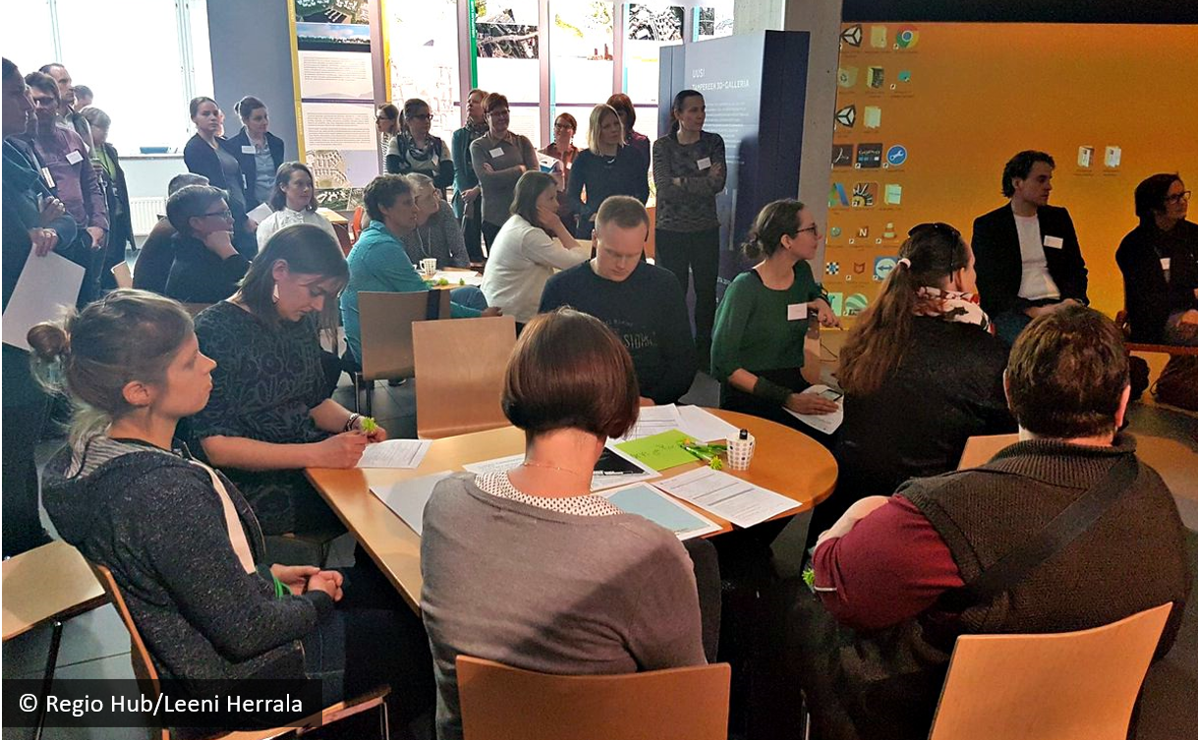
First Results of Co-creating Nature-based Solutions in Tampere
- Tue, 17/04/2018
The UNaLab project develops the nature-based solutions of Vuores and Hiedanranta in the spirit of “living labs”. During the project, residents will act as researchers alongside professionals, testing the new innovations in their everyday lives. A series of three workshops is organised in Vuores and Hiedanranta during spring 2018. The workshops involve visioning, ideating and implementing/testing nature-based solutions for the case areas. Nature-based solutions have many important tasks: they provide recreation, retains and purifies storm water, clean the air and offer habitats for animals.
In Vuores, the co-creation of the nature-based solutions started in March at an event held at the Vuores school. Residents, visitors and other users were asked to share their experiences and development ideas for the local blue and green infrastructure. The event culminated in a development vision for the nature-based solutions of Vuores. The vision comprises a nature-based functionality where nature is seen as a source of recreation, play and renewal that is hosted by the community and an urban nature lab that is monitored by the community. Aquatic life is cherished through agile responses and long-term development.
The basin in the central park with its warm rocks, diverse species and calming nature sounds received particularly good feedback. People were worried about felling, the turbidity of the basin in the central park, the drying of the common alder woods, the safety of steep hills and the disposal of construction waste into the water system. The aquatic life in Vuores requires more active monitoring, and the deteriorating quality of the water requires quick reactions. On the one hand, people would like to preserve more areas in their natural state, but, on the other, they also called for more efficient efforts to prevent the spread of large-leaved lupine and support vegetation that is typical for the area. They would also like to testing of new plant species in the nature-based systems. The functionality of nature and the opportunities it provides for the community were considered important: residents would like to set up nest boxes for flying squirrels and host insect hotels, the horses of local stables could do their part in keeping the grass cut, schoolchildren could “police” the blue and green systems, and nature could inspire people to play by offering, for example, rocks for jumping on and natural building supplies for treehouses. Solutions that would promote the recreational use of nature include footbridges, bonfire sites and new nature paths.
The first workshop in Hiedanranta was organised at Lielahti Manor after the workshop in Vuores. The event attracted experts who work with nature as part of their jobs or hobbies and representatives from the City of Tampere. The future vision for the area is to create an “open-air museum” of the growing and developing plant and animal species that inhabit the industrial and urban environment. In practice, this could mean reviving the agricultural past of Lielahti Manor or integrating traditional plant species into green roofs or storm water elements. Despite the extensive construction plans, parts of the area should be left unbuilt and preserved in their natural or semi-natural state, allowing ecosystems to develop spontaneously. In order to use the potential of Lake Näsijärvi in Hiedanranta, the “zero fibre” sediment that has accumulated at the bottom of the lake must be removed and processed.
Nature should be one of the values that guide the development of the area. The shoreline should not become too densely built in order to allow everyone to enjoy the aquatic landscape. Old industrial waste water treatment ponds were discussed as a possible solution for storm water treatment. Ponds would collect and slow down the urban runoff, promote diversity and serve as a landscape element that also promotes communality among residents. The participants hoped that the area would have more facilities for active recreation, such as water sports and fishing areas, saunas and hiking trails, but also room for spontaneous wandering, stopping, silence and independent recreation in nature. Considering the vastness of the area, accessible pocket parks or rooftop gardens could serve as convenient places for recreation. Some of the participants hoped that the local environment would have more wild zones and places for insect watching, while others mentioned chickens, bees and urban agriculture. Instead of traditional playgrounds, residents would like to have opportunities for free play: treehouses, climbing trees and natural building materials. Camping sites were also discussed.
Copy at least these – Greetings from Vuores to Hiedanranta
– Preparing for lupines, advance measures
– Nature for people, “nature in the city”
– Using mulched ground
Text: Workshop facilitators Inna Ampuja from Ramboll and Leeni Herrala and Laura Ojanen from RegioHub.